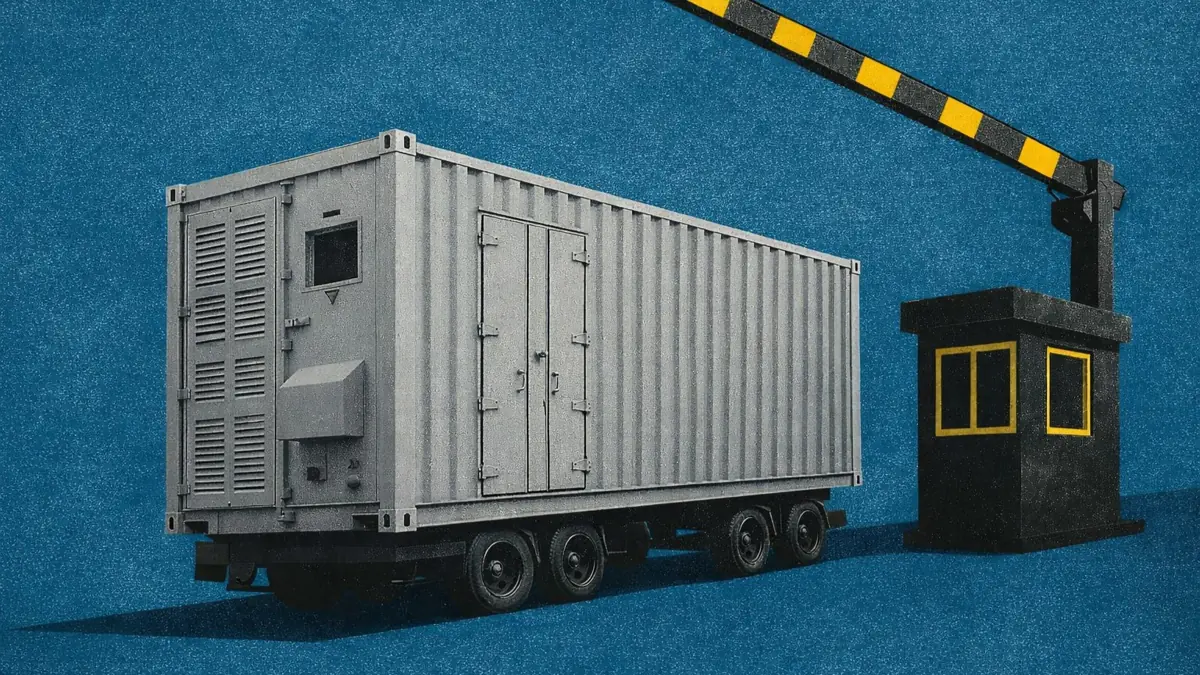Capacity Market: its growing importance for battery revenues
Capacity Market: its growing importance for battery revenues
The Capacity Market is becoming more important for battery energy storage following falling revenues elsewhere. The saturation of frequency response markets has caused revenues from frequency response and other sources to decrease by 67% in 2023 compared to 2022. The long-term, contracted revenue provided by the Capacity Market has provided some respite for batteries - especially those with the highest value contracts.
So, how important have revenues from these contracts become for battery energy storage systems in Great Britain? And how much does this vary by system?
In 2023, batteries earned an average £51k/MW/year across frequency response, wholesale markets, and the Balancing Mechanism. This rose to £65k/MW/year, including Capacity Market revenues.
- In December 2023, the Capacity Market contributed a record 30% of total revenue following falling frequency response prices.
- Current Capacity Market revenues come from a range of auctions. Older T-4 auctions and the latest T-1 auctions have returned batteries that won contracts the most revenues.
- Prices have increased over the past three years as capacity targets went up and older generating units face retirement.
To understand more about what the Capacity Market is and how it works, check out our Energy Academy video.
Capacity Market revenues accounted for 30% of all battery revenues in December 2023
The GB BESS Index tracks revenues from frequency response, wholesale trading, and the Balancing Mechanism. In 2023, the index averaged £51k/MW/year. The addition of Capacity Market revenues increases this to £65k/MW/year.
In December 2023, revenues fell to their lowest point to date. Average battery revenues across all markets was £42k/MW/year, with the Capacity Market accounting for 30%. This compares to a 10% share in December 2022, despite Capacity Market revenues being similar.

Capacity Market revenues are not the same across all batteries, however, and vary significantly by the auction in which contracts were won. These will have been subjected to different prices and derating factors.
Prices have been on the rise in the Capacity Market
Prices in both T-1 and the T-4 auctions have increased in recent years. This rise impacts T-1 contracts starting delivery in 2021 or later. In the T-4, this has impacted contracts starting in 2023 and later.

In the T-1 auction, these higher prices have come due to higher capacity targets. There was a 33% increase in target capacity year-on-year for delivery years 2021 and 2022. Targets in the T-4 auctions have remained relatively unchanged, but the retirement of existing generators means an increasing reliance on new-build sites. These have come at a higher price, driving the clearing price up.
Derating factors for battery energy storage have continued to decrease
While prices have risen in recent years, derating factors for battery energy storage have continually decreased. The 2017 auctions introduced tiered derating factors relative to storage duration. These aim to represent the value short-duration storage provides to the system during potential system stress events.

This change meant that while 1-hour batteries in the 2016 T-1 auction could be contracted for 96% of their connection capacity, this dropped to 40% in the 2017 auction. In the T-4 auction, 1-hour units saw their derating factors fall to 36% for delivery in 2021. After the initial reduction from the 2017 auction round, derating factors have continued to decrease, although at a lower rate.
Older T-4 contracts and newer T-1 contracts provide the most value for batteries
The effective value of Capacity Market contracts can be calculated by multiplying the clearing price by derating factor. The introduction of these derating factors meant that batteries with T-4 contracts beginning in 2021 and 2022 saw an average 80% reduction in value compared to contracts beginning in 2020.
In the T-1, recent high prices have significantly outweighed the derating factor reductions. T-1 contracts for delivery in 2021/22 delivered 45 times as much value as T-1 contracts for delivery 2020/21 following a jump in prices.

The steady increase in price for T-4 contracts beginning delivery from 2023 has led to an increase in value for these contracts despite reducing derating factors. However, this value is still lower than the older T-4 and newer T-1 contracts.
34% of battery capacity was contracted in Capacity Market agreements in December 2023
Batteries with Capacity Market contracts active in December 2023 totaled 3.3 GW based on rated power, 94% of all battery capacity in Great Britain. However, the derated capacity of these contracts is 1.1 GW. On average, batteries with Capacity Market agreements active in December 2023 were contracted for 34% of their rated power - but this varies significantly system by system.

Some batteries have been able to win contracts as Demand Side Response (DSR), which typically has higher de-rating factors. These traditionally are behind-the-meter units that can add capacity to the grid by reducing demand.
High prices in the T-1 auction for 2023 returned the highest revenues in December 2023
As a result of the different contract values from each auction, every battery saw different Capacity Market revenue in December 2023. Capacity Market revenues in the month ranged from £3,600/MW to £105/MW, averaging £1,100/MW.

Longer-duration batteries with Capacity Market contracts in the T-1 delivery year 2023/24 earned the most revenues due to the high clearing price of £60/kW. As these are one-year agreements, owners of these contracts may look for high prices in this year’s T-1 auction.
Systems with a T-4 contract for delivery year 2020/21 also received some of the highest revenues due to their higher derating factors. These units can continue to benefit from this for up to another 12 years.
Newer units primarily won contracts in the 2023 T-1 auction
Half of the units online before 2023 have 15-year contracts, while the other half have maintained a series of 1-year contracts from T-1 and T-4 auctions. Units built since 2023 are mainly contracted in the 2023/24 T-1, but some of these systems have 15-year contracts starting in future delivery years.

You can download the data behind this chart here.
The range of auctions for which batteries hold Capacity Market contracts will become even more varied. While some retain their older 15-year agreements, others may continuously seek new one-year agreements. A further 8 GW of batteries that already hold contracts from T-4 auctions are due to come online between 2023 and 2026.
The next round of Capacity Market agreements will be awarded in February
The next auction round of the Capacity Market is due to take place at the end of February. The T-1 will provide contracts for delivery starting October 2024, while the T-4 starts in 2027. The results from the next round of Capacity Market auctions will be announced on February 20th for the T-1 and 27th for the T-4.
There’s currently 4.4 GW of battery energy storage connection capacity prequalified for the T-1 auction and 11 GW in the T-4. With the high prices in recent T-1 and T-4 auctions, these contracts could be significant for future battery revenues.
Sources
Download the data behind this article below ⬇️







